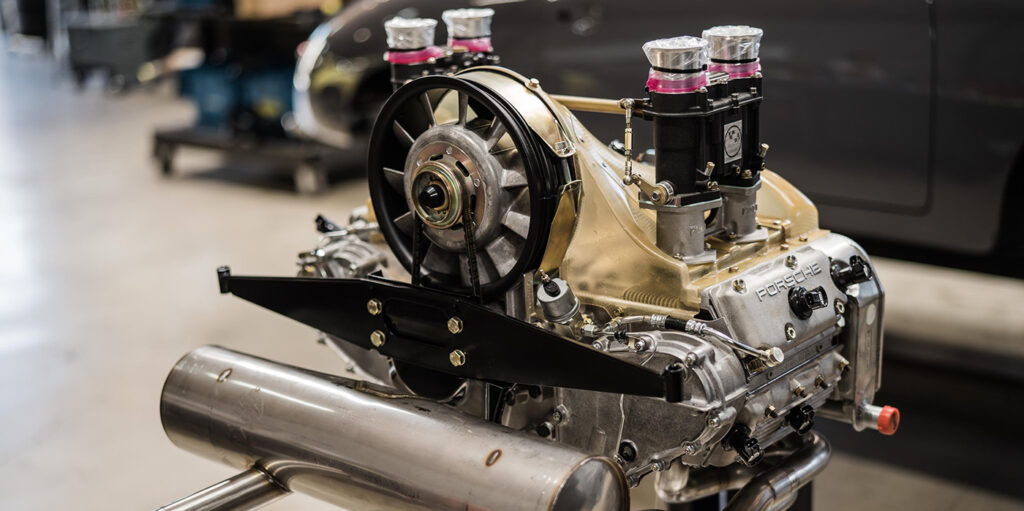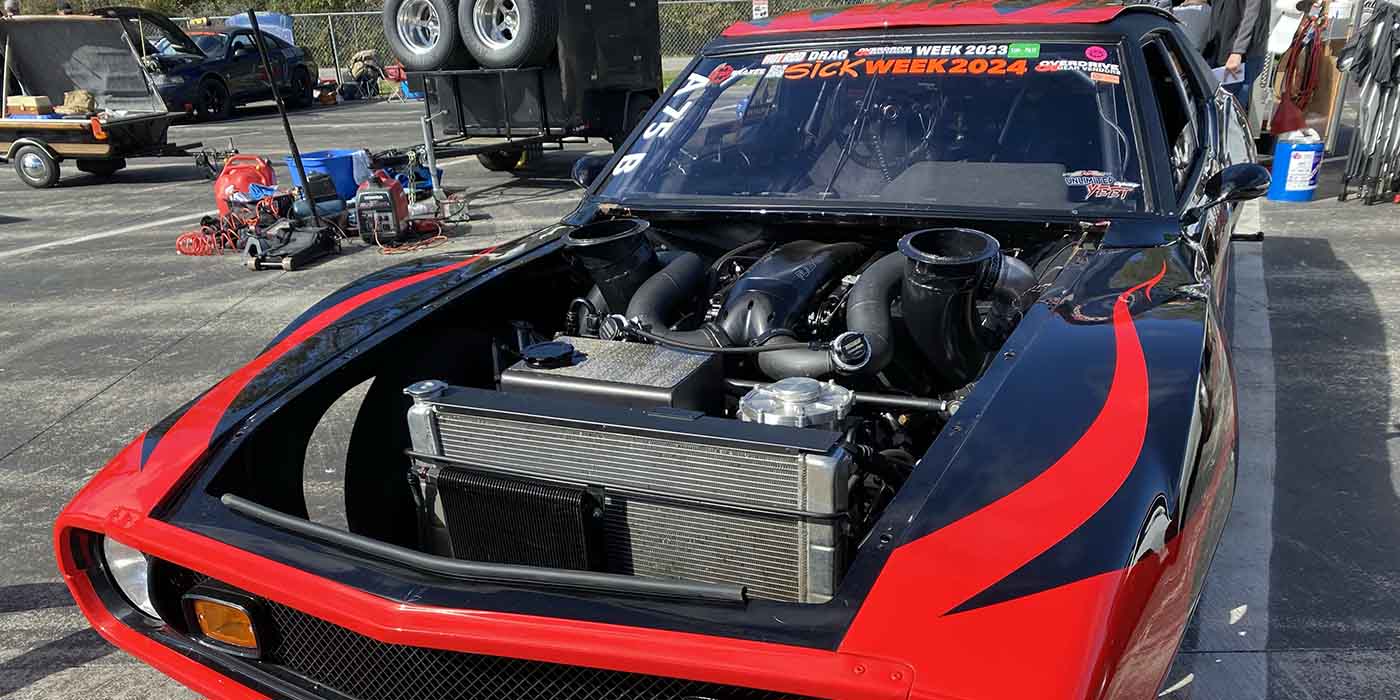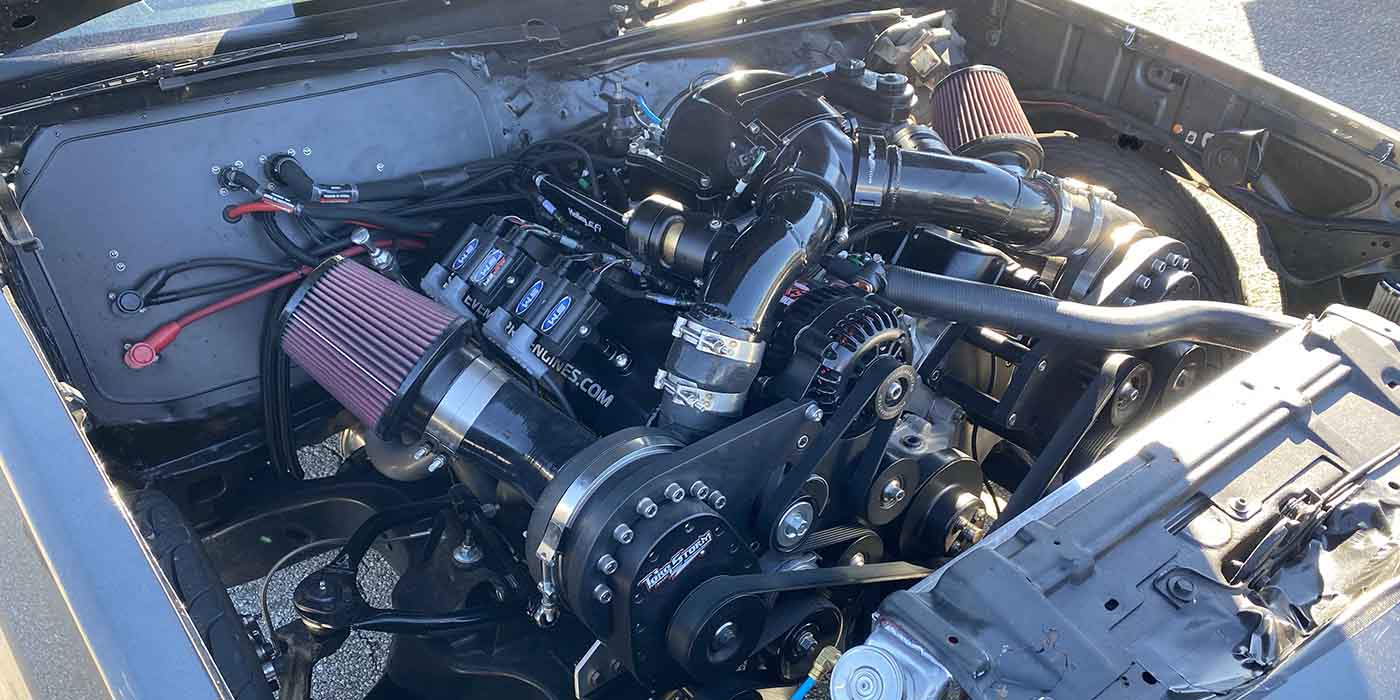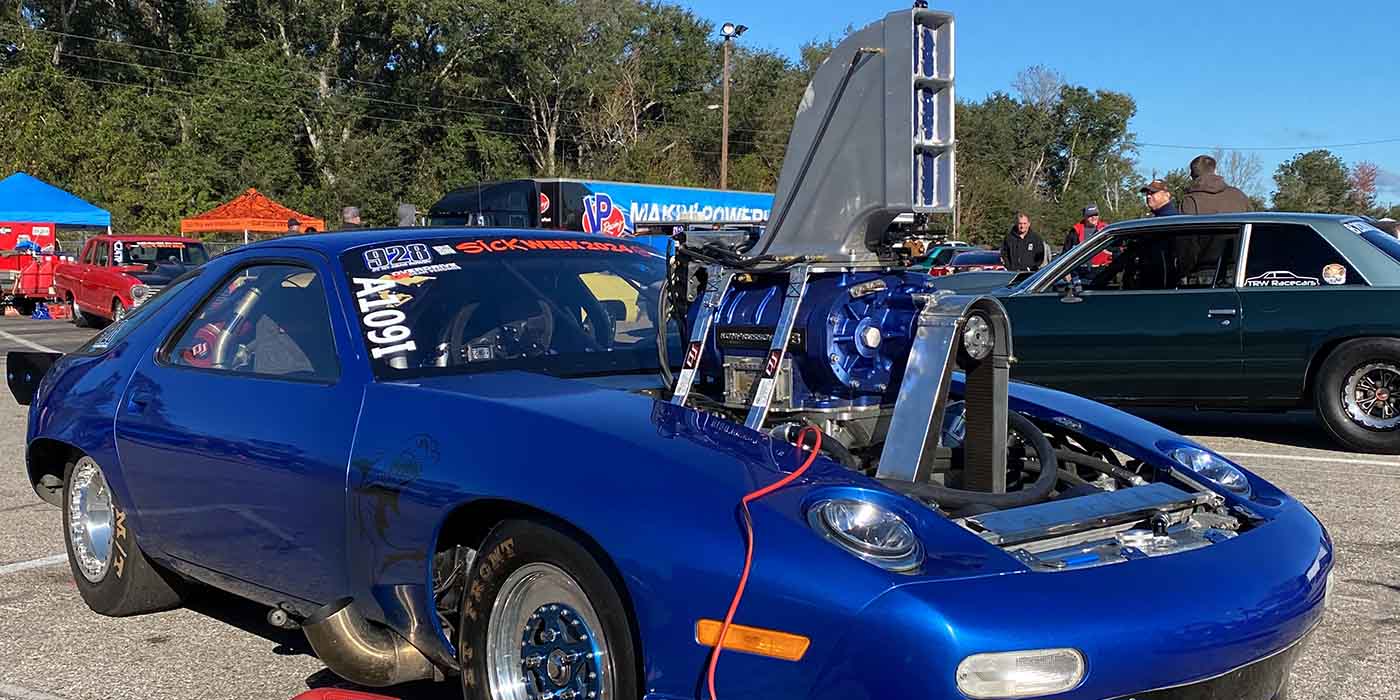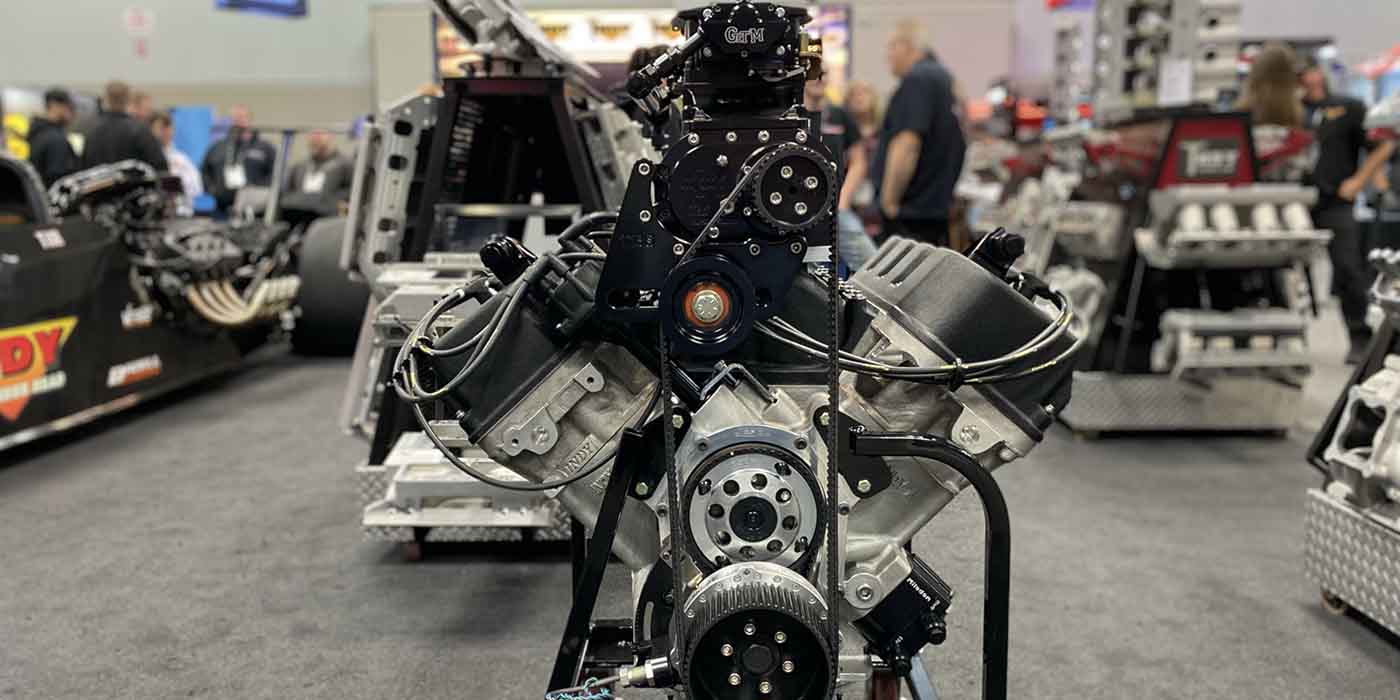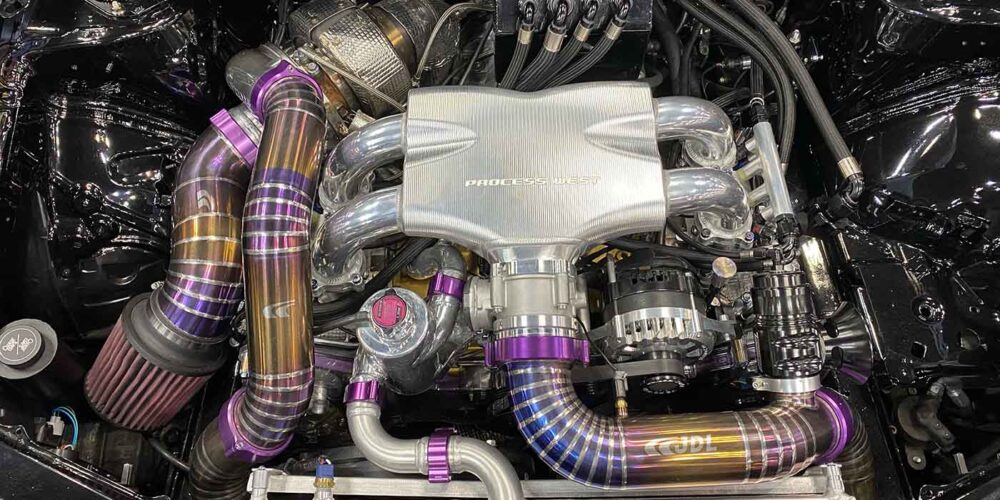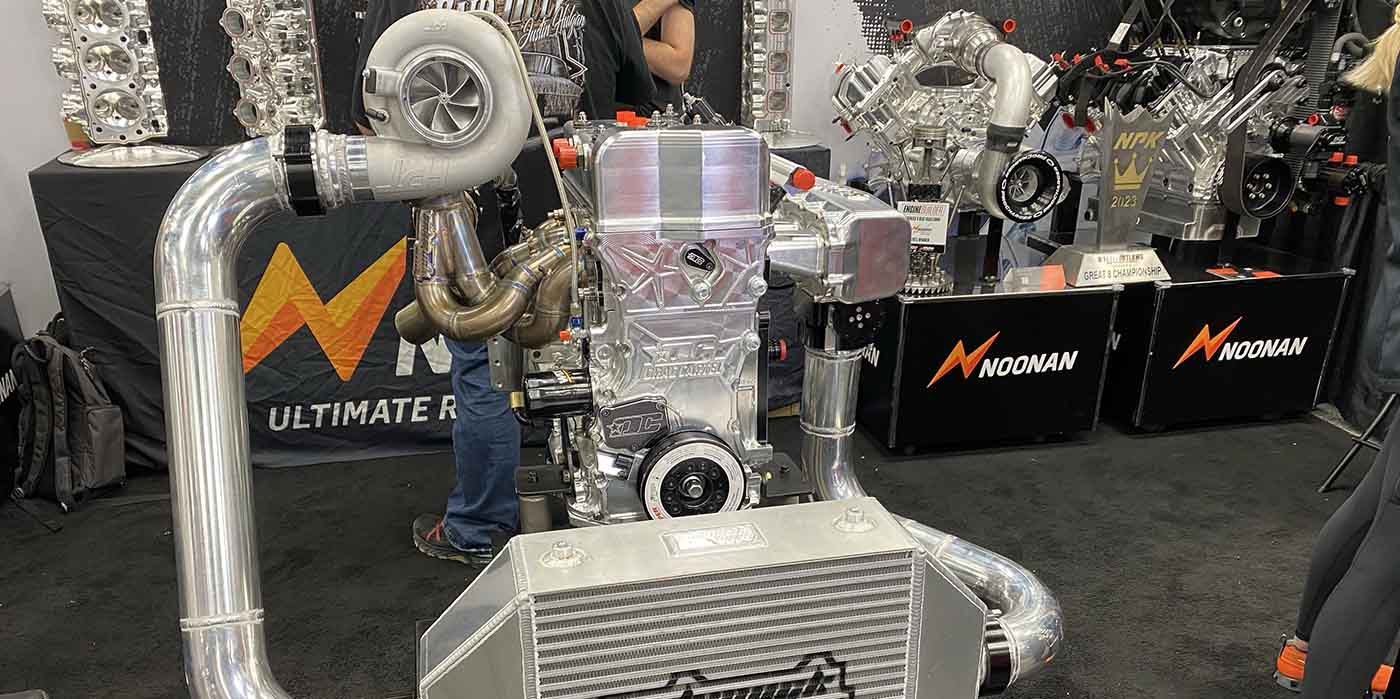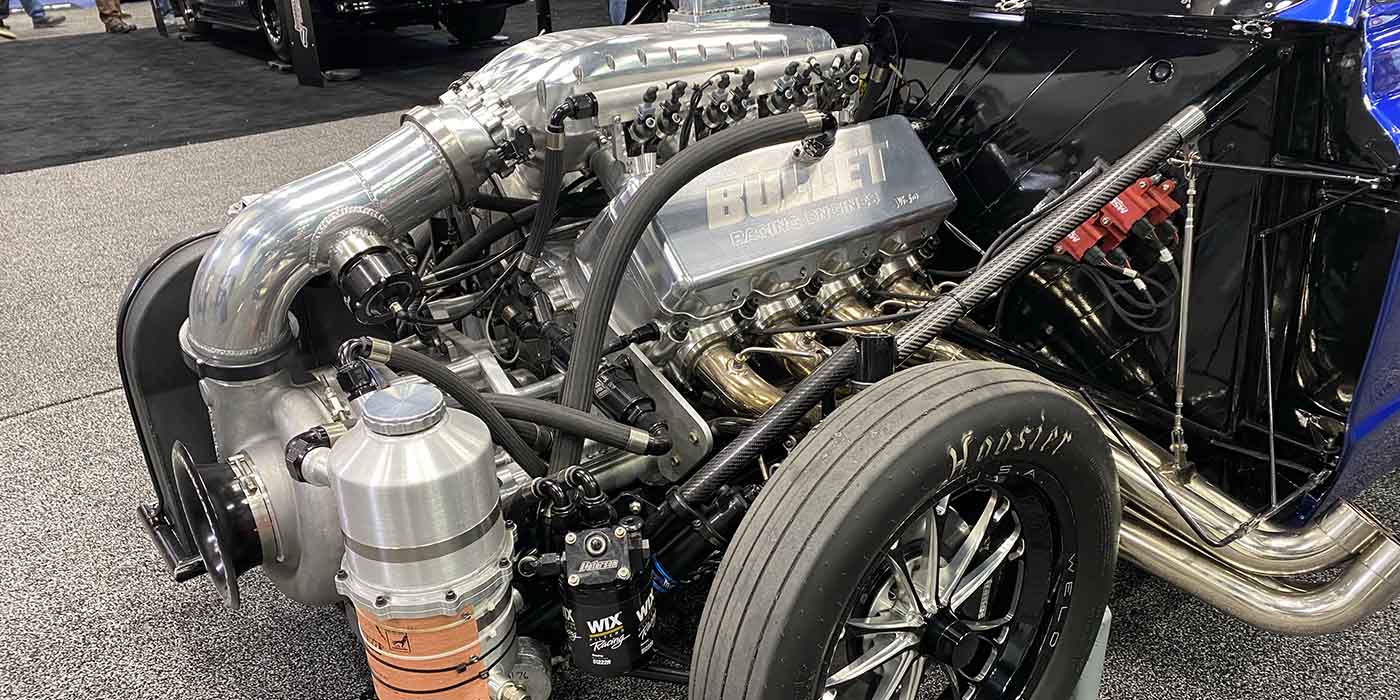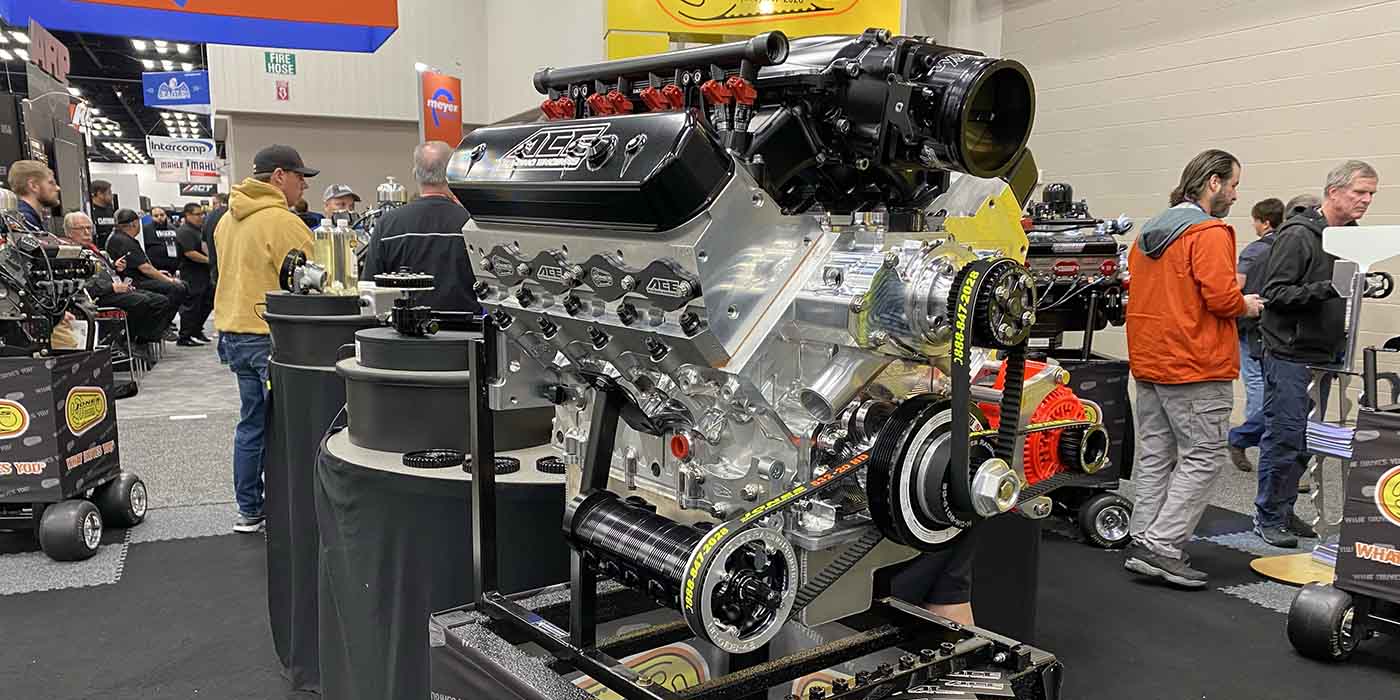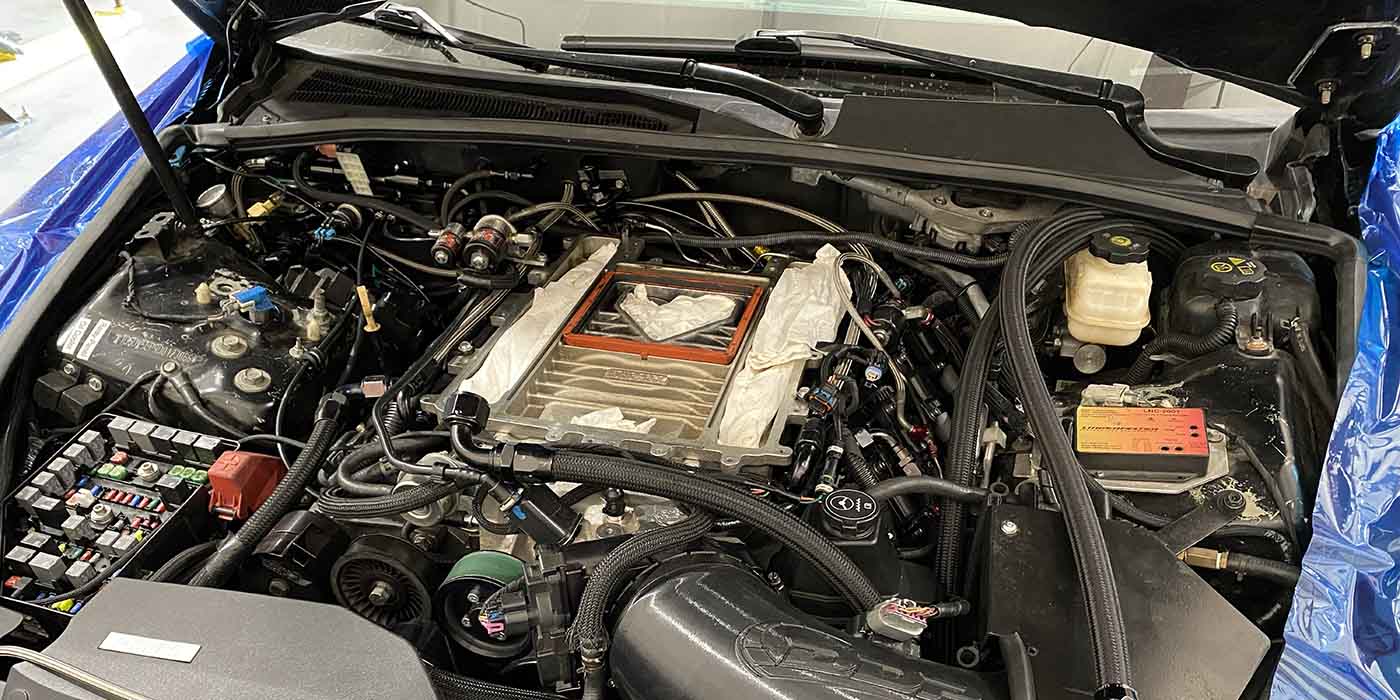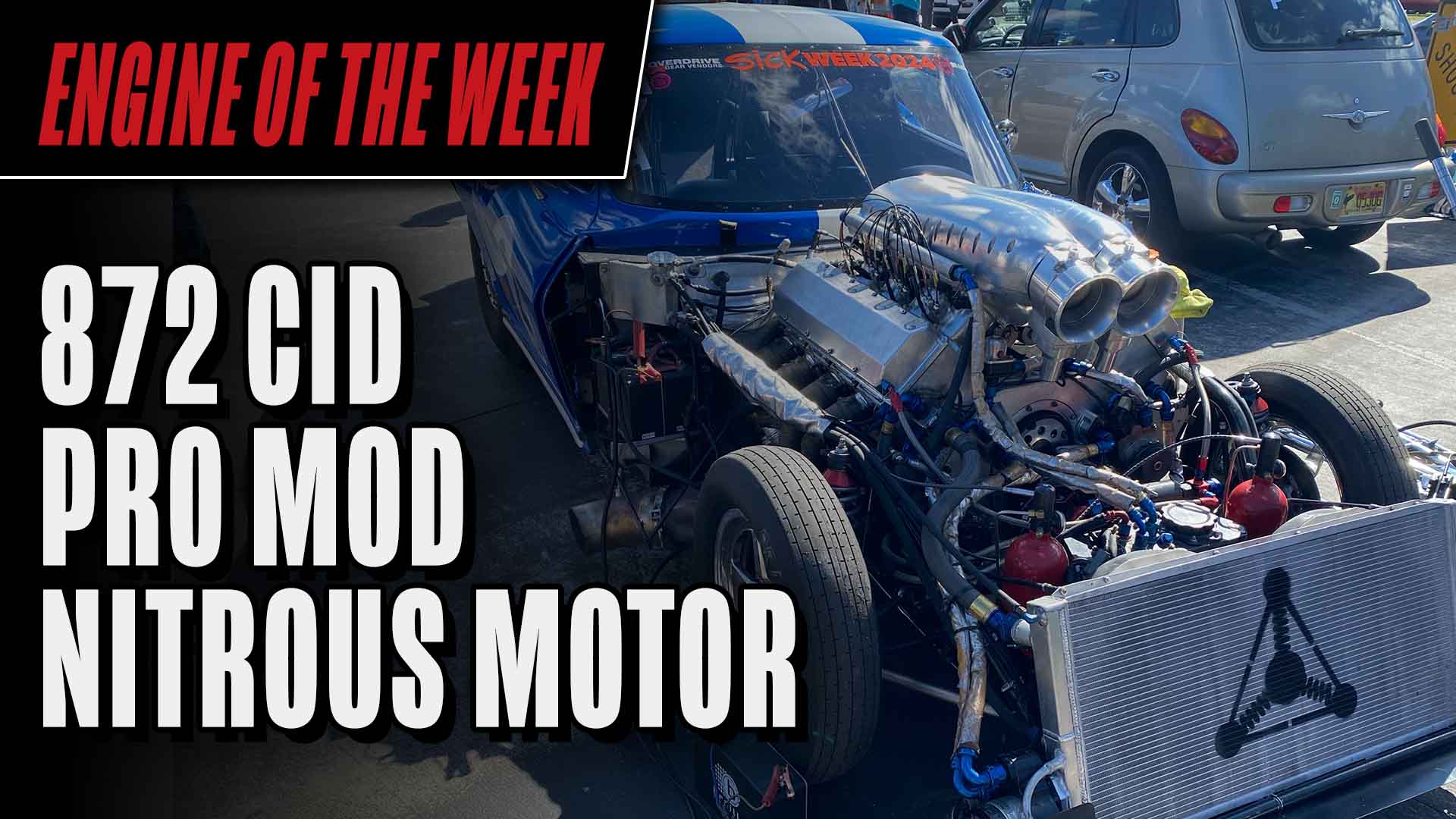Engine of the Week is presented by



For many people, Porsche is a car brand held in the highest regard. Frankly, it’s not hard to see why. The German car manufacturer has a storied history and makes gorgeous, well-performing, high-performance sports cars. Oh yeah, the engines under the hood aren’t too shabby either. In fact, those engines take the driving experience to another level. That’s why Porsche fanatics have continued to restore these cars and update the engines with modern technology.
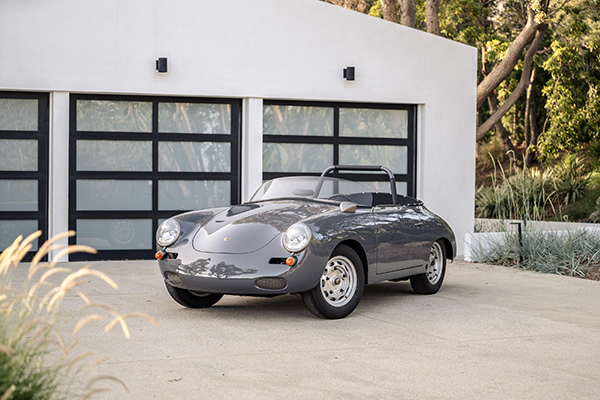
This rendition of our Engine of the Week is a testament to the interchangeability of Porsche engine parts. We recently spoke with Workshop 5001 owner, Marlon Goldberg, who’s shop is based in Los Angeles, about his build of a 1963 356 B Cabriolet Porsche with a four-cylinder 2.5L Polo engine. He told us the build features parts from almost every generation of air-cooled 911 engine ever built, as well as parts from some of the water-cooled era where they still had the Mezger crankcase. They’ve been mixed and matched to build this oddity Porsche powerplant called a Polo engine.
The Polo engine was designed by Polo Motors owner Dean Polopolus, whose shop is located in Temecula, CA. The Polo engine is essentially a four-cylinder 911 engine instead of the usual six cylinders. Supposedly, the Porsche factory had experimented with the design, but the project never got off the ground.
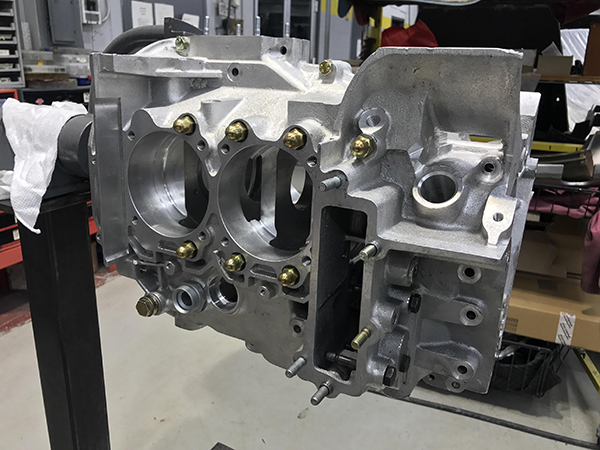
“Dean did a prototype where he took a 911 engine, cut the crankcase and welded it back together with the middle cylinders missing,” Goldberg says. “He prefers to build these himself, but for certain people, he’ll sell it in kit form and you get from him the crankcase that he has cast and a crankshaft and cams from Web Cam. Then, you use all 911 parts.
“Instead of needing six pistons and cylinders, you just go buy four pistons and cylinders. You also need an oil pump, an intermediate shaft, chain boxes, and cam towers. You take cam towers from a 911 and have them cut down to be shorter. It’s this sort of oddity of the Porsche engine world.”
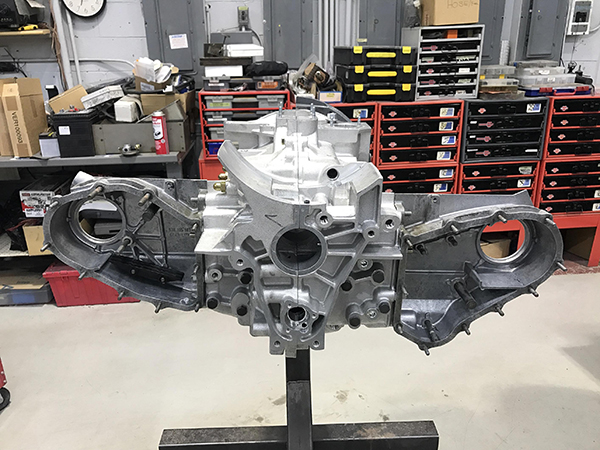
If you’re familiar with Marlon’s builds from Workshop 5001, you’ll know his shop can build one hell of a Porsche vehicle inside and out, from bumper to bumper and everything in between. The engine work is no exception either. Marlon had wanted to build one of these Polo engines and his friend and Porsche trainer, Bobby Singh, had also been wanting to build one, so they ended up doing the build as a collaborative project.
The car that would house this Polo engine is a 1963 356 B Cabriolet that a customer was looking to have restored. Everyone gets fascinated by these cars due to the expense, but in the world of custom cars, $1 million isn’t that much. This 356 to begin with wasn’t found in the best of conditions.
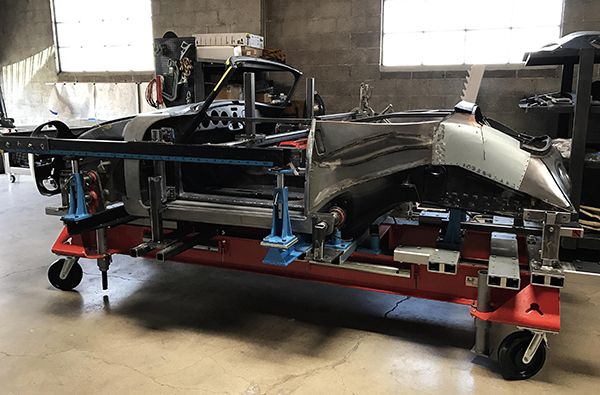
“The client brought us the car, and it had been sort of poorly restored over the years,” Goldberg says. “A lot of these 356s, even when they were less than five or 10 years old, they were already having corrosion issues. People were putting fiberglass patches in the floors. They were worth $1,000, so no one cared. As they became more valuable throughout the ‘80s and ‘90s, and in the last 10 years the value of these cars has just totally exploded. People tried to do restorations to flip them and make money and most of these restorations were not done well.
“When we really started looking closely at this car, it was clear it had been crashed multiple times. It had actually been rolled over. The windshield had been impacted and pushed down, and the whole cowl had been pushed down. The windshield was spliced back together in two spots, and then where they welded it, it was then covered in lead, which was kind of standard practice back then with bodywork stuff. The thing was just a mess, and it had some corrosion issues on top of it.”
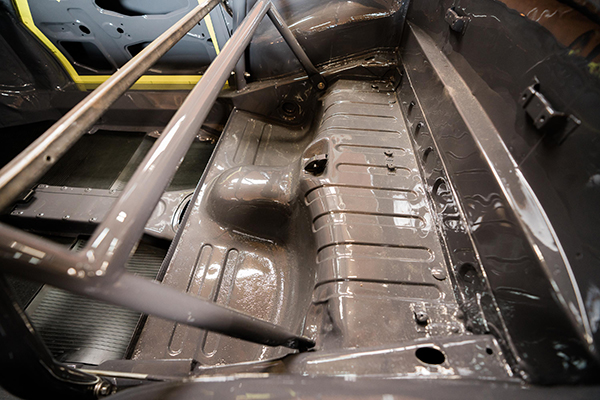
To begin the restoration, the chassis of the 356 was totally reconstructed for better strength since the Polo engine would be adding horsepower to the equation. Originally, a 356 could produce 70-90 horsepower in the original trim, while a four-cam 356 had 110-115 horsepower.
“Structural rigidity in these things was not as critical with low power,” Goldberg says. “What we did is we gusseted it basically from the front of the car to the back along the longitude to make it stiffer because it’s an open car. We then, in a very hidden way, tube framed the rear of the car because structurally a 356 sort of ends at the hoop that goes right in between the engine and transmission.
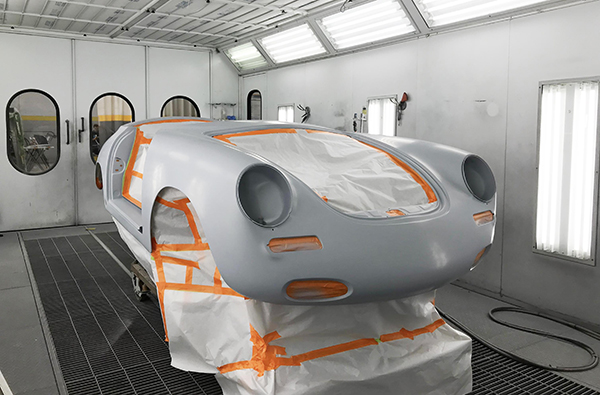
“If you visualize where the rear seats are, if you’re sitting down where your butt would be in the rear seat, just below there in the middle, you have this big hoop and that’s where the car ended. Then, towards the front of the car and the transmission tunnel, you had two other sort of rubber donuts with studs coming off and nuts that would slide in and hold the front of the transmission.
We basically added a third mounting point that’s kind of what a 911 would have towards the fan side – all the way at the back of the car. We now essentially have three engine and transmission mounts. It just adds to the overall structural rigidity.”
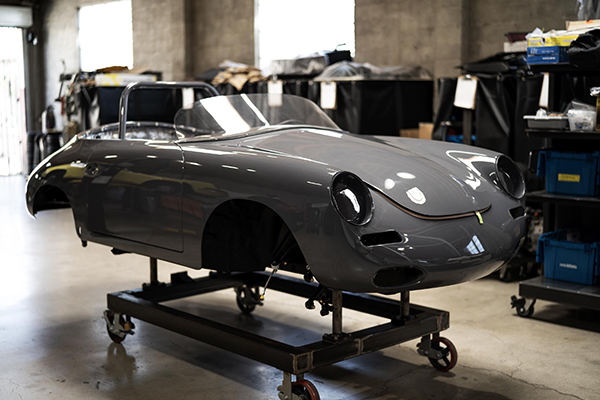
This 1963 B Cabriolet got turned into an open sports racer. During metalwork, the whole cowl got reshaped, so that it would look more like a speedster because that’s what the plexiglass windshield was actually developed for.
“This was a T6 chassis car and the speedsters were A and Pre-A, so that cowl shape was slightly different,” he says. “We did a lot of very, very subtle, custom metalwork on this car to give it a more streamlined look. A big part of that was eliminating bumpers. If you look at this car compared to a normal 356, it’s a lot more of a streamlined kind of hot rod look, but very subtle.”
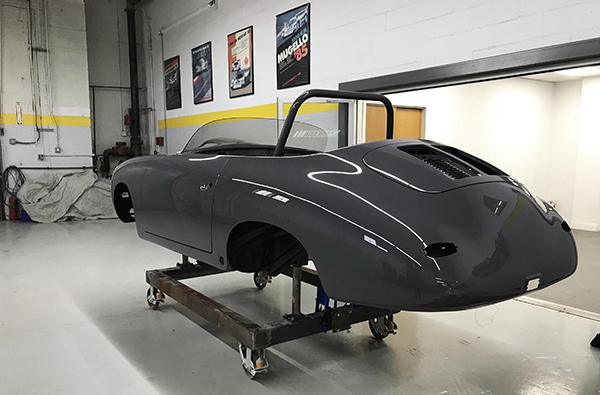
Bobby Singh’s shop, Manhattan Motorsports (MMS), which is the Porsche Collision Center for New York, did the final surfacing and paintwork on the car. Also, because Bobby is a bit of a gearbox guru, he built what’s called a WEVO swing axle 901 for the 356.
“It looks like the original swing axle setup that you would find in a 356 or a Volkswagen, but the casing is made by WEVO in Northern California, and then you use donor pieces from the original 356 gearbox and pieces from a 901, to make this kind of one-off hybrid gearbox,” Goldberg says. “You have a fifth gear instead of four gears. We set that up as an overdrive to cruise on the highway.
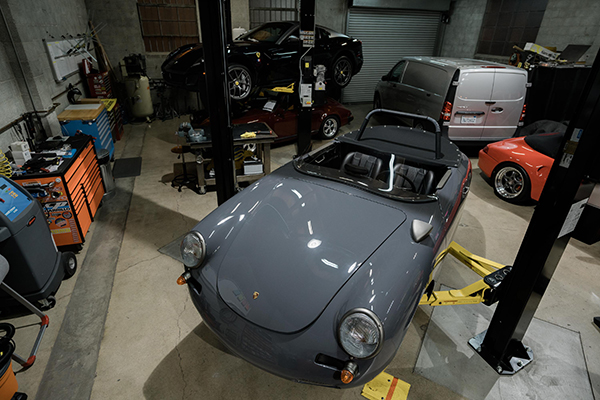
“Everything in this car is stuff that never really existed, but the car was built in a way that you look at it and to someone who doesn’t know that much about Porsches, it looks like something that could have left the factory that way. I think even people who really know these cars well would look at it and see a lot of things that, yes, it could have left the factory or some of the modifications are period correct, but we’ve laced in some of the modern motorsport componentry in a very subtle way.”
For instance, to start the car, there’s no more key for the ignition. Goldberg added a little Deutsch connector that’s wired as an immobilizer for the PDM. The whole car runs on two MoTeC computers – a PDM15 and an M130 – so it allows the ECUs to power up. Then, you have the start/stop button out of a 997 and 991 factory RSR race car.
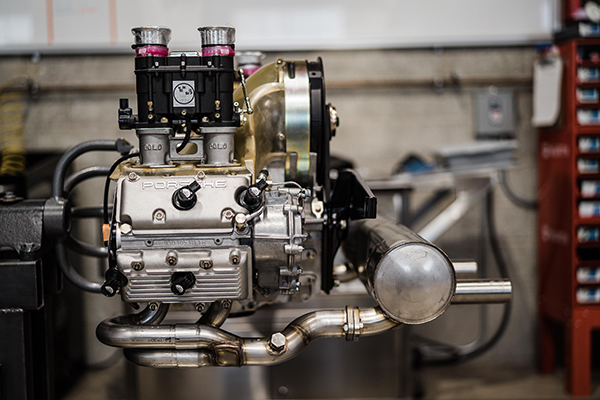
“Those are neat touches,” Goldberg says. “It also has 60mm GT drum brakes from race cars of the era, so we picked and chose what’s modern motorsports stuff and what is period correct motorsports stuff. I think we’ve done it in a way that’s cohesive and makes the car very interesting.”
As with any Porsche sports car, the most interesting aspect is what’s under the hood. This four-cylinder 2.5L Polo engine has plenty of goodies to match the custom 356.
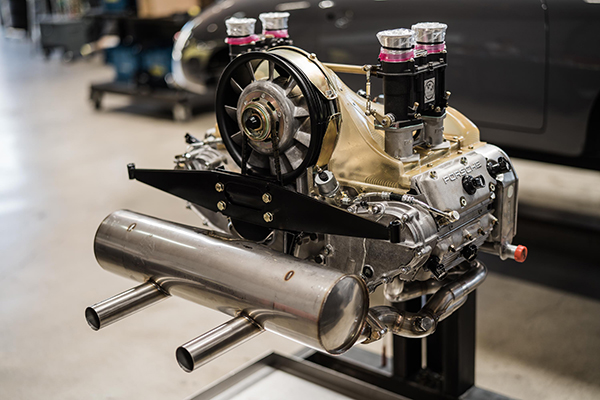
“As mentioned, it runs on a MoTeC M130, so it’s obviously fuel-injected and the throttle bodies on that particular engine were built before I had the relationship with Kinsler,” Goldberg says. “I had been at the PRI Show and saw that Borla had bought out a company called TWF that makes throttle bodies. They developed a throttle body for the Ford Coyote 5.0L that looked like Weber carburetors, but it’s an EFI throttle body.
“Inside, where float bowls would have been, there’s two modern Bosch injectors. I saw this, and they had four of them sitting on top of a Coyote engine, and I thought two of these on a Porsche 356 or this Polo motor would be awesome.
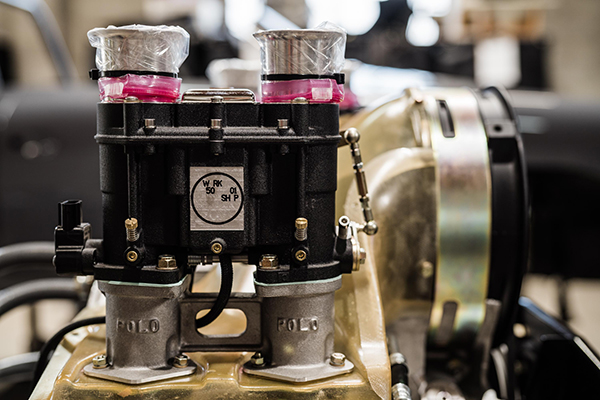
“I happen to know Alex Borla and I texted him with a picture. I said, ‘I’d love to use these on a 356.’ He goes, ‘It’s a great idea. No problem.’ They even put my Workshop 5001 logo on a set and they look killer. You open up the engine bay and it looks like a set of Webers, but it’s modern fuel injection.”
According to Goldberg, the only caveat with that throttle body is you’re using Weber-style linkage, which is not as accurate as the linkage Workshop 5001 uses on the Kinsler throttle bodies.
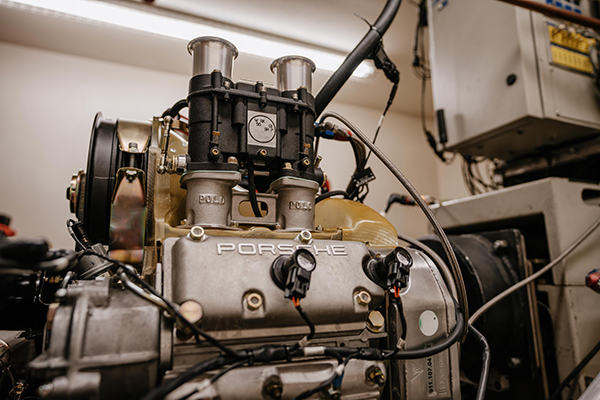
“If I was building another one, I’d probably move to our Kinsler throttle bodies, but I think the way we did this one and the look, it’s kind of a one-off, special thing,” Goldberg says.
As for the internals of the Polo engine, Workshop 5001 used a 102mm 993 setup, so the pistons and cylinders are what would have been used on a 993 RSR. The connecting rods and rockers came from Pauter for this build. The intermediate shaft is from a 996 Turbo. The shop used brand-new 3.2L chain boxes, and the oil pump is from a 2.4L 911.
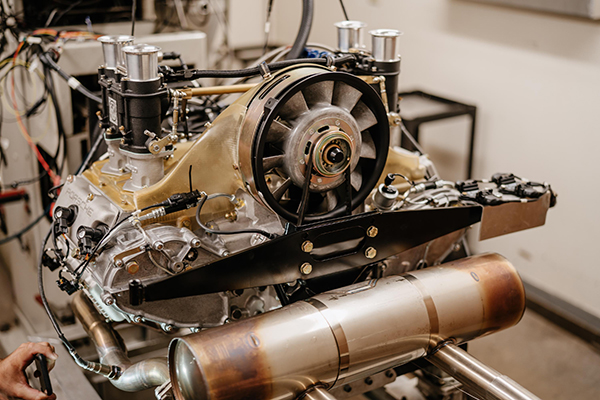
“On the oil pump, you have to dissect the brand-new pump and take the suction neck out, cut it down and then epoxy it back into the pump in reverse direction of how it was originally,” he says. “We also didn’t like how the rods and the crank kind of fit together, so we had a crank specialist go back through the crank for us and make some tolerance modifications.”
All the wiring for the car and engine was done by Sakata, which does all of Workshop 5001’s stuff. “It’s very, very high tech for a low-tech car,” Goldberg says.
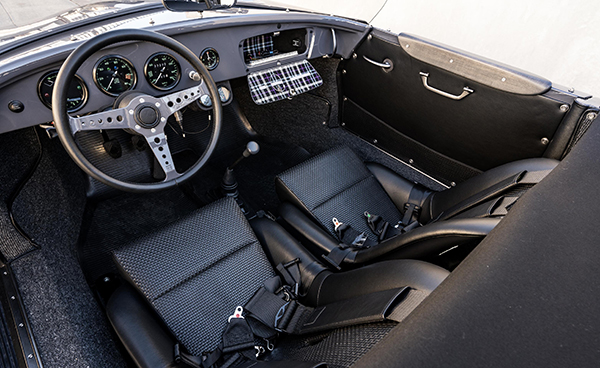
Despite all the meticulous, custom work on this 356, one thing Marlon kept struggling with was the valve cover gasket. He ended up turning to Elring to get a custom prototype built in order to seal the engine properly and stop any leaks.
“As an engine builder, these are the sort of things you lose sleep over,” Goldberg says. “The one specific thing Elring has been helping me on with this is that because you have custom cut cam towers that are shorter and you have custom valve covers, there was no valve cover gasket that existed for these engines.
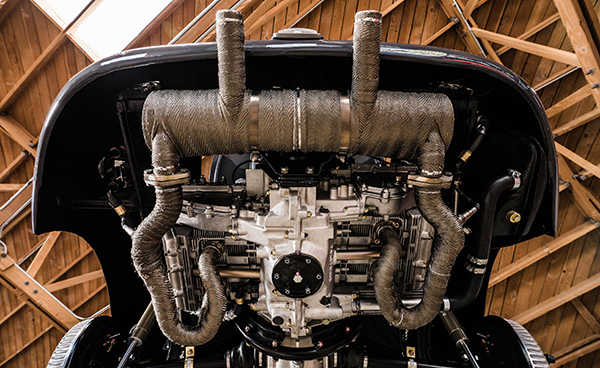
“I called Dean Polopolus as we were building the engine to ask him, but he didn’t have anything and he usually makes something himself. I went next door to MMS in New York where we had started initial assembly on the engine because Parts Authority has one of their depots there. I bought gasket material and I’m sitting there with an Exacto knife and a ruler trying to get my own custom gaskets. After two or three attempts of screwing them up and not quite getting it right or overlooking something, I had to find something different.
“I spoke to an engine builder friend of mine who had a set of valve covers still laying around. I went to see him and I gave him a couple bucks for whatever gaskets he had laying around. They looked a little hokey pokey and like someone had cut them by hand. I used them for one oil change on the car, but they were leaking and everything else in this engine was dry. I can’t have that leaking on the headers.
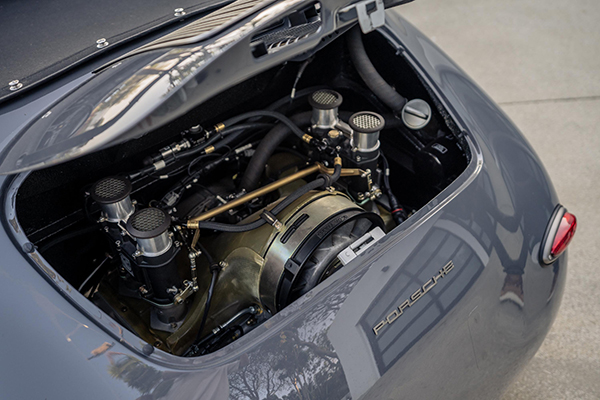
“Dean Polopolus also had these orange silicone gaskets that you’re not supposed to tighten past 10-inch-lbs., which is nothing, because if you tighten it too much, they start squeezing out. It was total junk.
“I contacted Bill at Elring and told him I built this engine and the only thing that leaks are these valve cover gaskets. I need to make a proper valve cover gasket for this thing. It’s driving me crazy. That’s what we’re working on now and we’ll hopefully have the prototype very soon.”
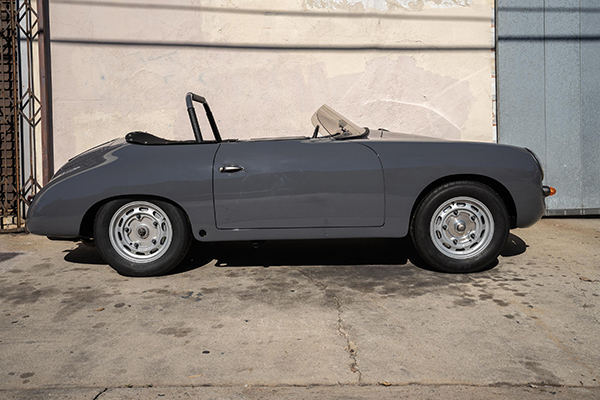
All said and done, the 1963 356 only weighs 1,800-lbs. and the finished Polo engine makes somewhere around 175-180 horsepower with similar torque.
“It’s not huge power numbers, but at 1,800-lbs., that thing is as fast as you want a 356 to be,” he says. “I ended up using the cam that Dean had supplied, and I think just based off of what I do with cams with some of the 911s, I could probably get 200 horsepower out of that engine. I think torque would probably be about the same. It’s not a car that’s worth chasing every last horsepower or torque. It’s more of the overall experience, and like any Porsche engine, if you build something that doesn’t leak, you’re ahead of the game.”
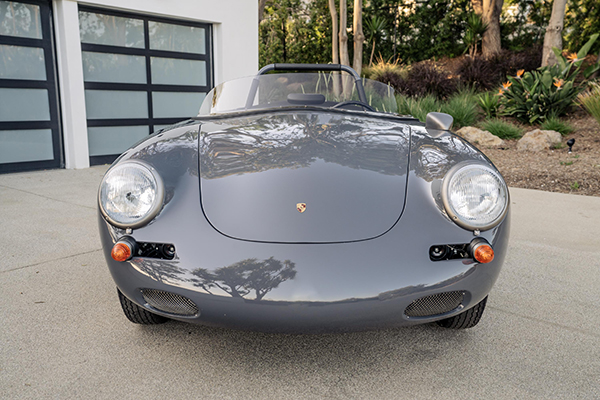
Marlon admits this particular build of Polo engine was a fun one, but if he ever did another, he would consider using a 912 chassis versus the 356.
“They’re are a lot of money to really not produce a lot of power, but they’re fun,” he says. “They’re very torquey and in a 356 or a 912 chassis it’s a very neat setup because you still make a decent amount of power and you have an engine that’s four cylinders instead of six, so there’s obviously some weight advantage. If you put it in a 912, it’s pushed very far into the chassis, which creates better handling dynamics versus a 911 of that era. I think if we were going to ever do one again, putting it in a 912 chassis is probably the proper home for it versus a 356.”
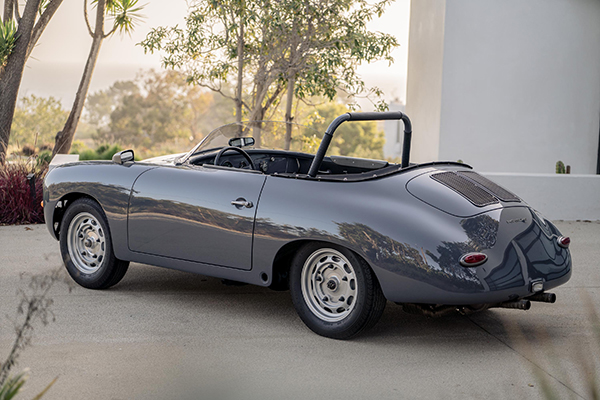
Engine of the Week is sponsored by PennGrade Motor Oil, Elring – Das Original and Scat Crankshafts. If you have an engine you’d like to highlight in this series, please email Engine Builder Editor, Greg Jones at [email protected].

